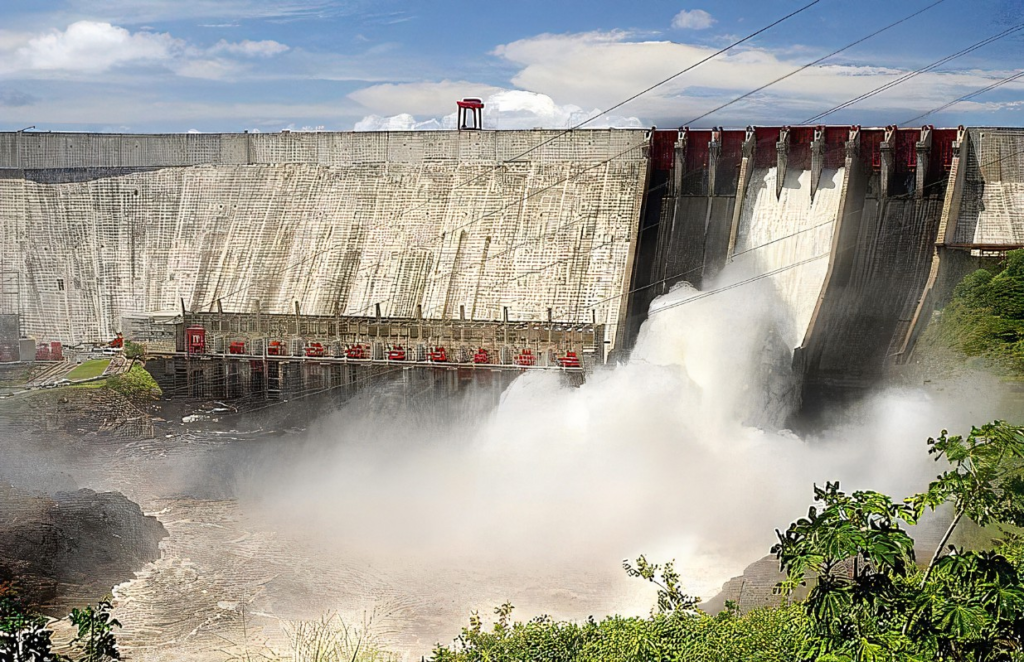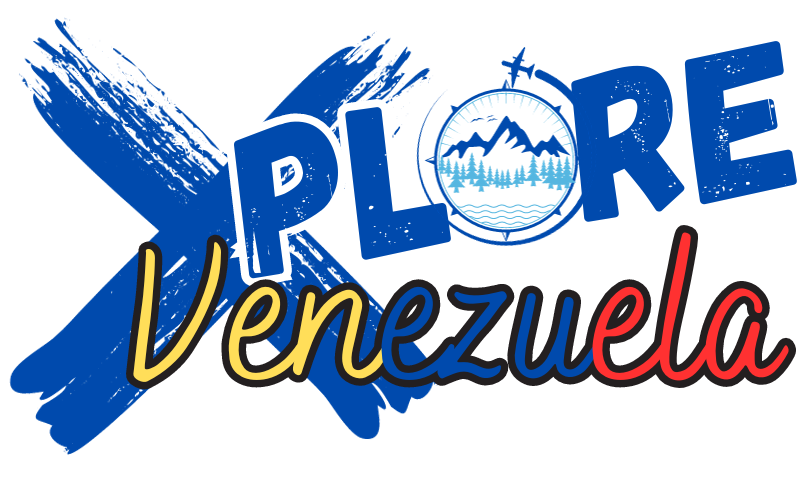From Ciudad Bolivar to La Paragua: Bolívar is one of the twenty-three states that, along with the Capital District and the Federal Dependencies, form the Bolivarian Republic of Venezuela. Its capital is Ciudad Bolivar, and its most populous city is Ciudad Guayana. It is located in the southeast of the country, in the Guayana region, bordering to the north with Guárico, Anzoátegui, Monagas, and Delta Amacuro, to the east with the Essequibo Guayana (currently under dispute), to the south with Brazil through the watershed between the Orinoco and Amazon basins, to the southwest with Amazonas, and to the west with Apure.
With 240,528 km², it is the largest state, with 1,795,353 inhabitants in 2023, the sixth most populous —behind Zulia, Miranda, Carabobo, Lara, and Aragua— and with 5.8 inhabitants/km², the fourth least densely populated, ahead of Apure, Delta Amacuro, and Amazonas, the least dense. Its territory is located almost entirely on the Guiana Shield. It has 11 autonomous municipalities and 47 civil parishes. Its main cities are Ciudad Bolívar, Ciudad Guayana, Upata, and Caicara del Orinoco.
This time, we will embark on a route that will surprise us with wonderful views and take us to incredible landscapes on the edge of the Guri Dam, where the largest hydroelectric power plant in the country is located. Along with the team from XploreVenezuela.com, we will travel the route that takes us from Ciudad Bolivar to the small town of La Paragua at the Guri Dam. We will pass through several towns and visit one of the most important dams on the continent, where sports activities such as fishing for Pavón, also known as Tocunare or Peacock Bass in English, are recognized worldwide.

The first time I undertook this route was approximately 30 years ago, when I was just starting out in Peacock bass fishing and was looking for incredible places to fish and camp for a few days. This led me to discover the village of La Paragua on the banks of the Guri, which at that time was nothing more than a hub for the small mining villages in the area, where gold was traded for fuel, food, tools, and pleasures.
It will be an approximate distance of 200 kilometers, which, depending on the condition of the roads and the detours you may take to visit incredible areas, can take about 4 hours to complete. We recommend setting out very early from Ciudad Bolívar if you want to return the same day, or for the more adventurous, spending a few days in the region camping by the river. Additionally, this route allows you to immerse yourself in the pristine nature of the region, with breathtaking landscapes and the possibility of outdoor activities such as hiking, bird watching, and more. Get ready for an unforgettable experience in the state of Bolívar!

Getting to Ciudad Bolivar:
To begin this journey from our second hub in the country, the city of Lecherías in the state of Anzoátegui, we will embark on a approximately 260-kilometer route that will take about 4 hours to reach the capital of Bolívar State.
Upon leaving Lecherías, you should head towards Barcelona via the Intercomunal Avenue, continuing eastward or southward at the intersection at the city’s outskirts. We will opt for Troncal #16 heading south towards El Tigre, which will lead us directly to the majestic Angostura Bridge, crossing the imposing Orinoco River until we reach our final destination, Ciudad Bolívar. This itinerary promises an unforgettable experience, where every kilometer traveled becomes an opportunity to explore the beauty of Venezuela and its cultural and natural diversity. Get ready to embark on an adventure full of discoveries and emotions!
From Ciudad Bolivar to La Paragua: The Route
After a restful night in Ciudad Bolívar, we woke up early, ready to embark on our journey. After enjoying a well-deserved breakfast by the banks of the majestic Orinoco River, delighting ourselves with freshly made empanadas accompanied by a refreshing glass of orange juice, we headed south in search of Troncal #16, which would take us to our first stop: Ciudad Piar.

Ciudad Piar, founded along with its “twin sister” Puerto Ordaz on February 9, 1952, emerged to provide a home for workers dedicated to iron exploitation. This steel boom of the 1950s, marked by the concession to Orinoco Mining, a subsidiary of U.S. Steel, led to the nationalization of iron on January 1, 1975, under the presidency of Carlos Andrés Pérez, thus creating CVG Ferrominera Orinoco C.A. A year later, the Corporación Venezolana de Guayana assumed the activities of the Orinoco Mining Company.
In addition to its iron industry, Ciudad Piar is a tourist treasure with places such as the “Raúl Leoni” Dam in Guri, the imposing Elephant Rock, the refreshing El Chorrito Spring, the relaxing Jacuzzi, and the charming Poza de Centeno. It also houses various local tourism companies that offer everything from sport fishing to ecological excursions by land and water. We cannot forget Cerro Bolívar, vital to the country’s economy, where the iron mining industry carries out the largest bauxite extraction in Venezuela and one of the main ones on the continent. The diversity of tourist activities and the economic importance of Ciudad Piar make it an essential stop on any journey through this region.

We continue our journey along the long Troncal #16, a trip that immerses us in the vast plains and green hills of the region. We pass through small towns like La Filomena, Santa Bárbara, and La Quina, where most of the inhabitants subsist thanks to artisanal mining. Along the way, numerous trails can be spotted branching off from the main road; some lead to farms, others to small rivers that flow into the nearby reservoir.
The adventurous with suitable vehicles can venture along these routes, discovering charming spots to cool off in the icy waters of the rivers and enjoy days of camping.
Panoramic views and stunning natural landscapes are constant during this journey along almost deserted roads, where trucks are the main companions of the journey. It’s important to remember to drive with caution; although the road is not in bad condition, it has potholes, and traffic from trucks in both directions requires constant attention. Therefore, it’s preferable to stop occasionally to admire the scenery rather than getting distracted while driving. This way, you can fully enjoy the surroundings and ensure a safe journey.

The Troncal #16, originating in Barcelona, Anzoátegui State, extends southward until it reaches the majestic Orinoco River, continuing its journey through Bolívar State until it reaches its final destination in La Paragua. This complete route introduces us to this charming riverside city, located on the banks of the Paragua River, near the El Guri Dam. Despite its relative geographic isolation, La Paragua stands out for the warmth and friendliness of its inhabitants, reflecting the hospitable characteristics common throughout the country.
Functioning as a significant hub of activity for the small surrounding mining towns, La Paragua serves as a meeting point where artisanal miners converge to trade their gold with wholesalers and distributors. While gold represents the primary economic source along the banks of the Paragua River, this paradisiacal place has tourist potential that could be tapped into with the support of state and national governments. Often relegated to oblivion, La Paragua only gains national notoriety when some illegal mining operation is dismantled by authorities, or when tragedies like collapses claim the lives of brave miners who risk everything in search of a livelihood for their families.

However, La Paragua is not limited to these grim news; it is imbued with natural beauty that manifests itself on the shores of the reservoir, where magnificent freshwater beaches offer a refuge for rest and recreation. During weekends, families of miners and travelers from Ciudad Guayana, Puerto Ordaz, and Ciudad Bolívar come in search of two days of peace and enjoyment in this picturesque riverside enclave.
The region overflows with charms waiting to be discovered by the adventure-seeking traveler. The white sandy beaches await serenely, offering a well-deserved rest after the journey. Fishing in this area is simply exceptional; just strike up a conversation with the locals to obtain valuable information about the best spots from the shore, or consider the option of renting a curiara or riverboat to explore the crystalline waters of the Paragua River and the southern part of the Guri reservoir.

Here, the concept of Overland is fully embraced, where the journey itself becomes an unforgettable experience, as significant as the final destination. The diversity of nature and the warmth of its people make this region a treasure to discover.

Returning to Ciudad Bolivar:
Troncal #16 is the main artery that connects travelers with La Paragua on their way there and back. Additionally, upon returning from Ciudad Piar, you have the opportunity to divert onto the regional highway, which will lead you to Puerto Ordaz, where it links up with Troncal #19, allowing you to return to Ciudad Bolívar. This route not only provides crucial access to key destinations but also offers the chance to explore various areas along the way, providing an enriching and diverse travel experience for adventurers and travelers alike.

